Daruvar Mountaineering Association Croatia's Largest
January 30, 2021 – Daruvar Mountaineering Association 'Petrov vrh' is Croatia's largest - it counts every 25th resident of the town as a member
Sitting quite close to the only significant stretch of mountain in Slavonia, you could have guessed some Davuvar residents would be keen on wandering into their nearby Nature Park and its peaks. But, you would surely never have known that Daruvar Mountaineering Association is Croatia's largest. It's so big, it counts every 25th resident of the town as a member.
Daruvar itself has some 10, 000 inhabitants. The Daruvar Mountaineering Association 'Petrov vrh' has 400 members, making it not only the largest sports association in the city but the largest mountaineering association in Croatia. Not so long ago, the society did not rank so highly. Papuk Nature Park, 'home turf' for Daruvar Mountaineering Association Petrov vrh © Papuk Nature Park
Papuk Nature Park, 'home turf' for Daruvar Mountaineering Association Petrov vrh © Papuk Nature Park
In 2017, Daruvar Mountaineering Association 'Petrov vrh' had only about fifty members. Its rapid growth can be attributed to a willful pursuit of younger town residents, a change in their programme and the embrace of modern communication methods. The Daruvar Mountaineering Association built its own website, set up a Facebook page and began attracting younger members. Its communication with town residents had previously involved only printed pieces of news pinned to a public bulletin board in Daruvar.
Their organised group excursions grew in ambition - trips in recent years have taken Daruvar Mountaineering Association members to climbs across Croatia, Slovenia and Italy, with some of the peaks tackled being over 3000 metres. But, it wasn't solely in the difficulty of the climb and the distances travelled in which they increased their ambition. The excursions were programmed specifically with families in mind and thought put into entertaining young members on each trip. It worked. Over 100 members of the Daruvar Mountaineering Association 'Petrov vrh' are underage climbers.
Although last year the Daruvar Mountaineering Association was unable to make its planned trips to Hungary and Montenegro because of travel restrictions, the sporadic closure of cafes and bars in Daruvar helped membership increase further, according to local news in moj.portal. Who knows how many this year will be taking to the hills with Petrov vrh.
Croatian Couple Set Off on 1,100 km Via Adriatica Trail to Promote Croatian Beauty
January 22, 2021 – As a New Year's resolution, the Croatian couple decided to set off on one of the longest and most demanding mountaineering ventures in Croatia – the Via Adriatica trail. Starting at Prevlaka, this is their 21st day of walking towards Cape Kamenjak in Istria. Delighted by Croatia's views and the hospitality of the people they met along the way, Josipa and Matija happily make their way through the first long-distance trail in Croatia.
The Via Adriatica trail combines existing hiking trails, forest roads, macadam, and roads in a total of 1,100 kilometers with 41,000 meters of altitude difference. The trail connects Croatia's most beautiful mountain massifs, peaks, and landscapes, stretching from the Istrian peninsula across the Croatian mountain threshold all the way to the Prevlaka peninsula.
As its name suggests, it connects the most attractive Croatian mountain massifs, peaks, and regions along the Adriatic coast. It passes through three national parks, three nature parks, six significant landscapes, three special reserves, and many protected areas.

Via Adriatica trail
If we go in concrete figures, Via Adriatica goes along 14 mountains, 12 rivers, two lakes, 18 protected areas, seven counties, and 52 municipalities. What makes this trail attractive and popular among Croatian and foreign hikers are the sea and island views wherever it is possible.
Josipa and Matija, a young romantic couple from Croatia, are now on the way to Svilaja, a mountain in the Dalmatian hinterland. Although sighing from the constant walking with heavy backpacks on their backs, they tell their story of how, when, and why they decided to head to this fantastic Croatian long-distance trail right now, in January.
'We got in the car and left'
Both Josipa and Matija are natives of Karlovac and hiking enthusiasts, chasing each their careers, which allowed them two months of a completely new mountaineering experience due to a combination of circumstances. Josipa (27) has a master's degree in economics, works as a reception manager in one Zagreb hotel, while Matija (25) runs his own business in an adventure travel agency in Karlovac.
In mid-November last year, they discussed what they would do in January and February since there is not much in Zagreb hotels at that time of the year. When Matija was banned from working on December 1, they decided to go on the Via Adriatica trail to promote Croatia, its beauties, Matija's company, but also – themselves.

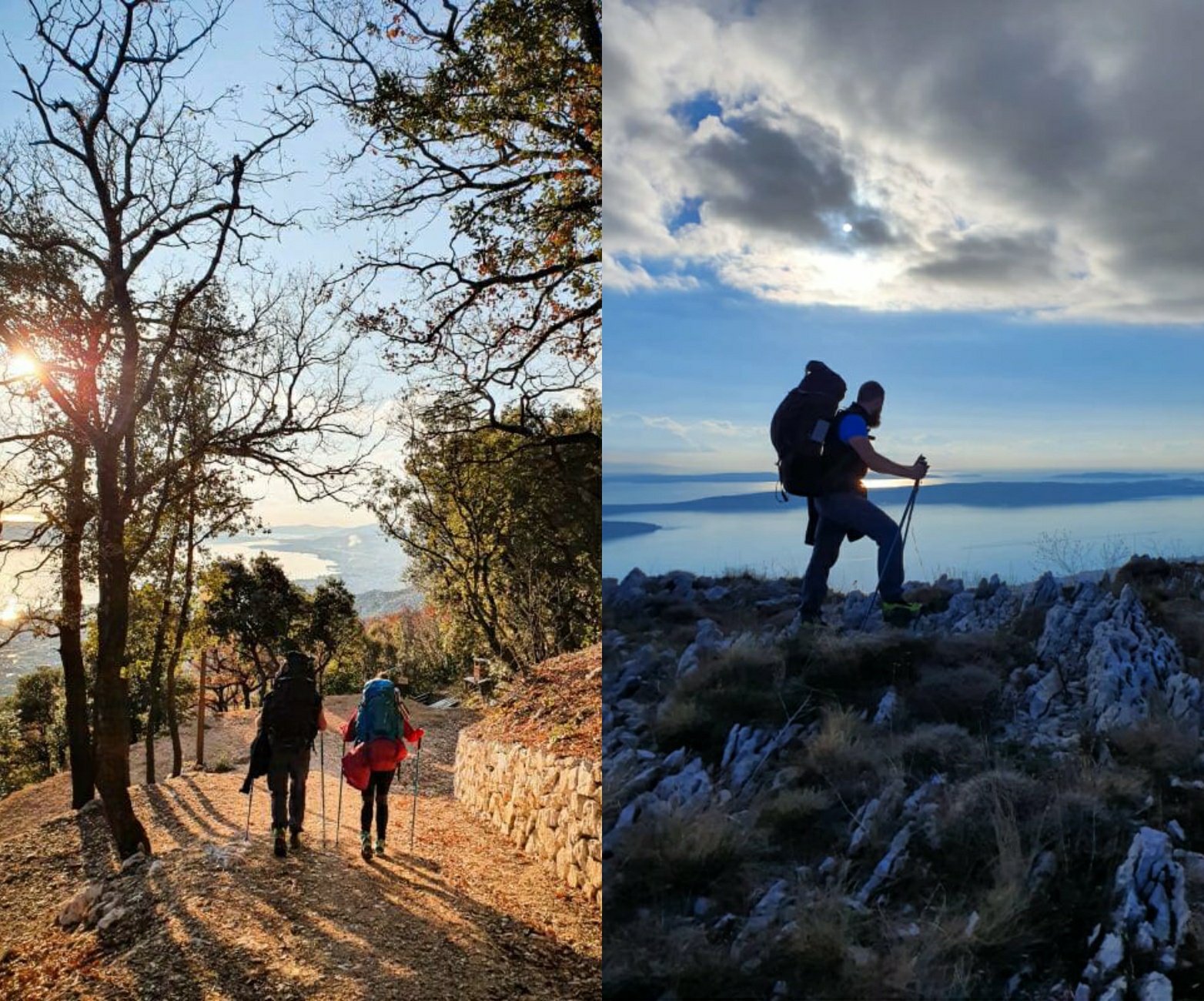
Josipa and Matija, Kozjak mountain
"We have time until the end of February, but we took more time than the average time needed to pass Via Adriatica because we took into account winter and unforeseen circumstances. We already know that we will have to take a three-day break this week due to heavy rain and stormy jugo wind," Matija told the Dalmacija danas portal, which caught up with them in Žrnovnica. They were hosted by the Association Žrvanj, which makes its premises available to all hikers who decide to cross the entire Via Adriatica.
For Josipa, as she says, Via Adriatica was a great idea, but it never crossed her mind to set off on this, not at all simple, but beautiful trail. However, she took advantage of this unique opportunity and, together with her beloved Matija, a member of the Croatian Mountain Rescue Service (HGSS), set off on an adventure.
"In December, we didn't know if we were going to leave or not. There was quarantine, bans, passes. Until the last three days, we didn't know if we were going. Then the earthquake happened, and again it was a question of whether I would go to the rescue or not. Given the time invested in preparation and all the equipment, we said we were going. We got in the car and left," says Matija.
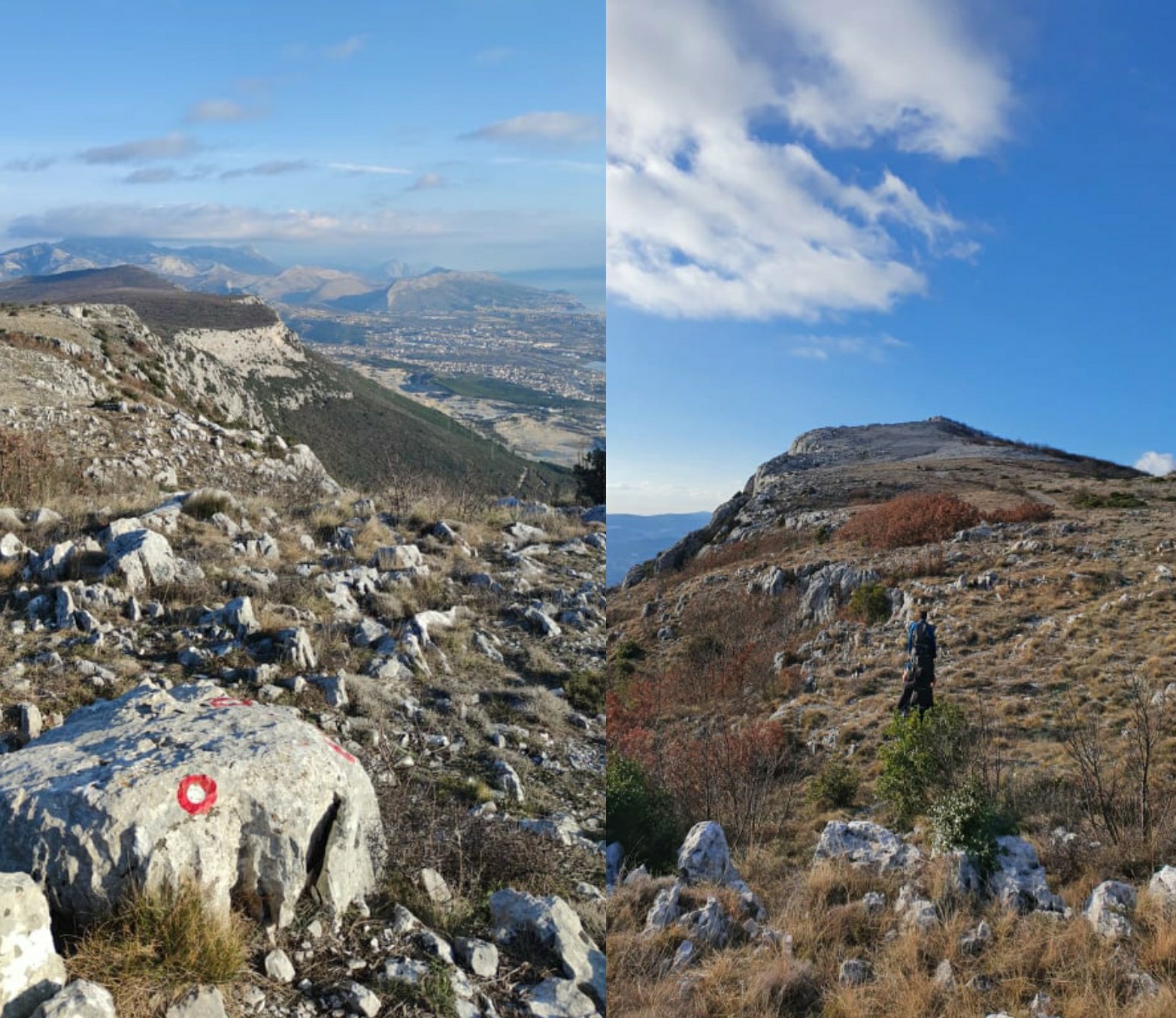
Kozjak mountain
'People make the whole trail special'
Although Via Adriatica starts in Cape Kamenjak in Istria, Josipa and Matija decided to start from the last destination in Prevlaka, to be closer to home in Karlovac at the end of the trail.
"The idea was to be in Dalmatia for the first few weeks, while we have supplies of food and then start getting closer to home. It's more natural to get closer to home than the other way around. We celebrated the New Year, and in the morning, we left Prevlaka," says Josipa.
"The first two or three Via Adriatica's sections are quite flat. When you walk on the flat for a long time, you get bored. Pelješac is beautiful, the view from Sveti Ilija, the highest peak of the Pelješac peninsula, is magnificent, but it takes so long to get there! We only reached the 'real' mountains after Pelješac – Biokovo, Omiška Dinara… Perun has beautiful views," says Matija, emphasizing that the most beautiful parts of the trail are – the people.
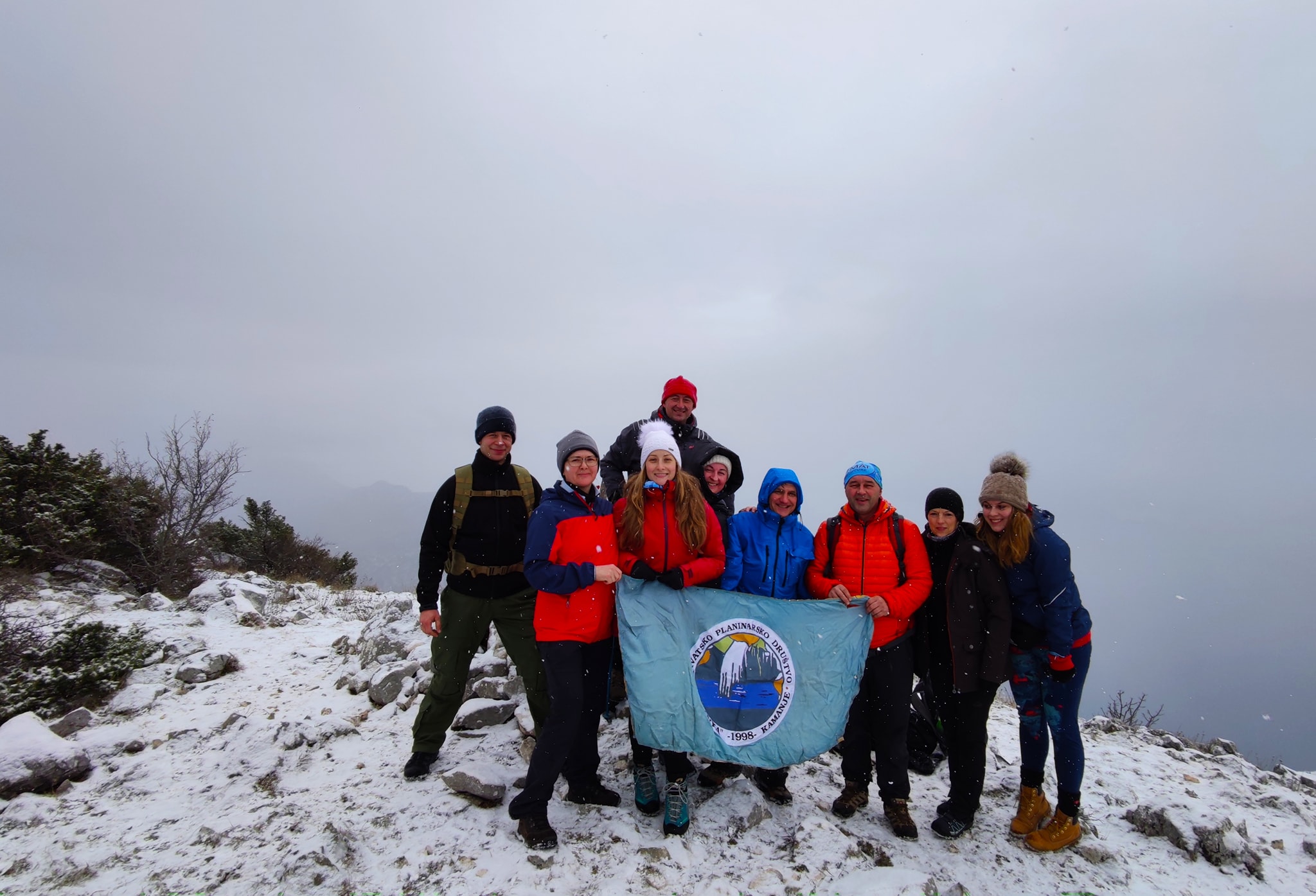
On the fifth section, Josip and Matija had good company - members of a mountaineering association
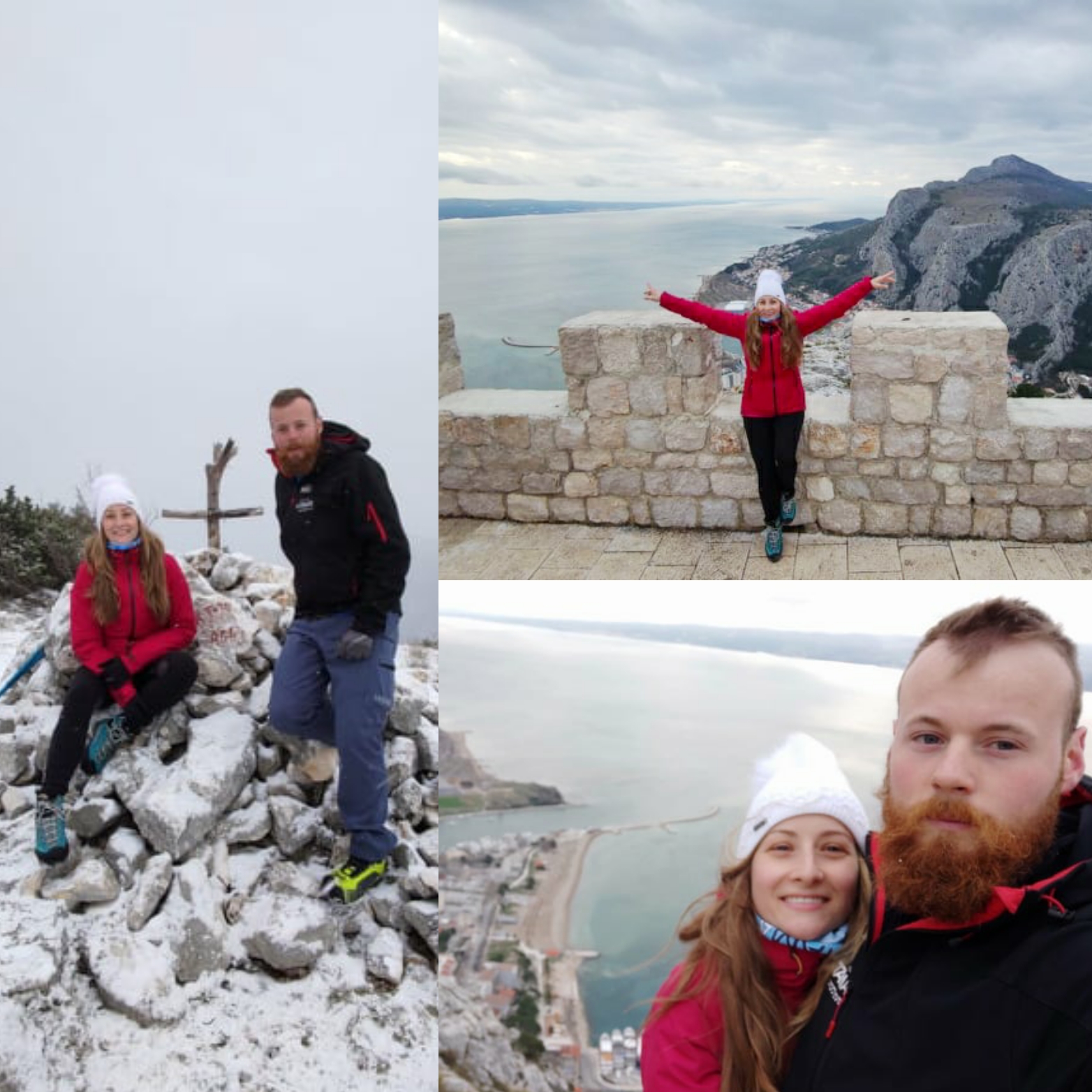
Josipa and Matija at Omiška Dinara
"People make the whole trail special. People selflessly give you their home, food, hospitality. There is no doubt that this path would be five times harder if people did not help. It wouldn't be impossible, but it would be a lot harder. If we had to sleep in the winter in a tent every night, it would not be easy. This way, when you know that warm accommodation awaits you in the evening, you are mentally better prepared. People feed us and take care of us," says Matija.
As they talk to us, they are on the sixth section of Via Adriatica, out of 13. Another 600 kilometers is still in front of them, but they are satisfied with their pace. With a laugh, Josipa says they are breaking through the thorns.
Best views they've ever seen
Before Via Adriatica, they visited Biokovo several times, but always during summer when everything is "stone and heat." They experienced it for the first time in the winter, and they say it was impressive.
"We imagined Biokovo white with huge vastness. And it greeted us exactly like that; icy, white. The weather was perfect; the snow was perfect for walking. We walked in crampons because everything was frozen. Although it was icy and cold, it was sunny, like in a movie. It was snowing on the Omiš Dinara, the large snowflakes falling," describes Josipa.
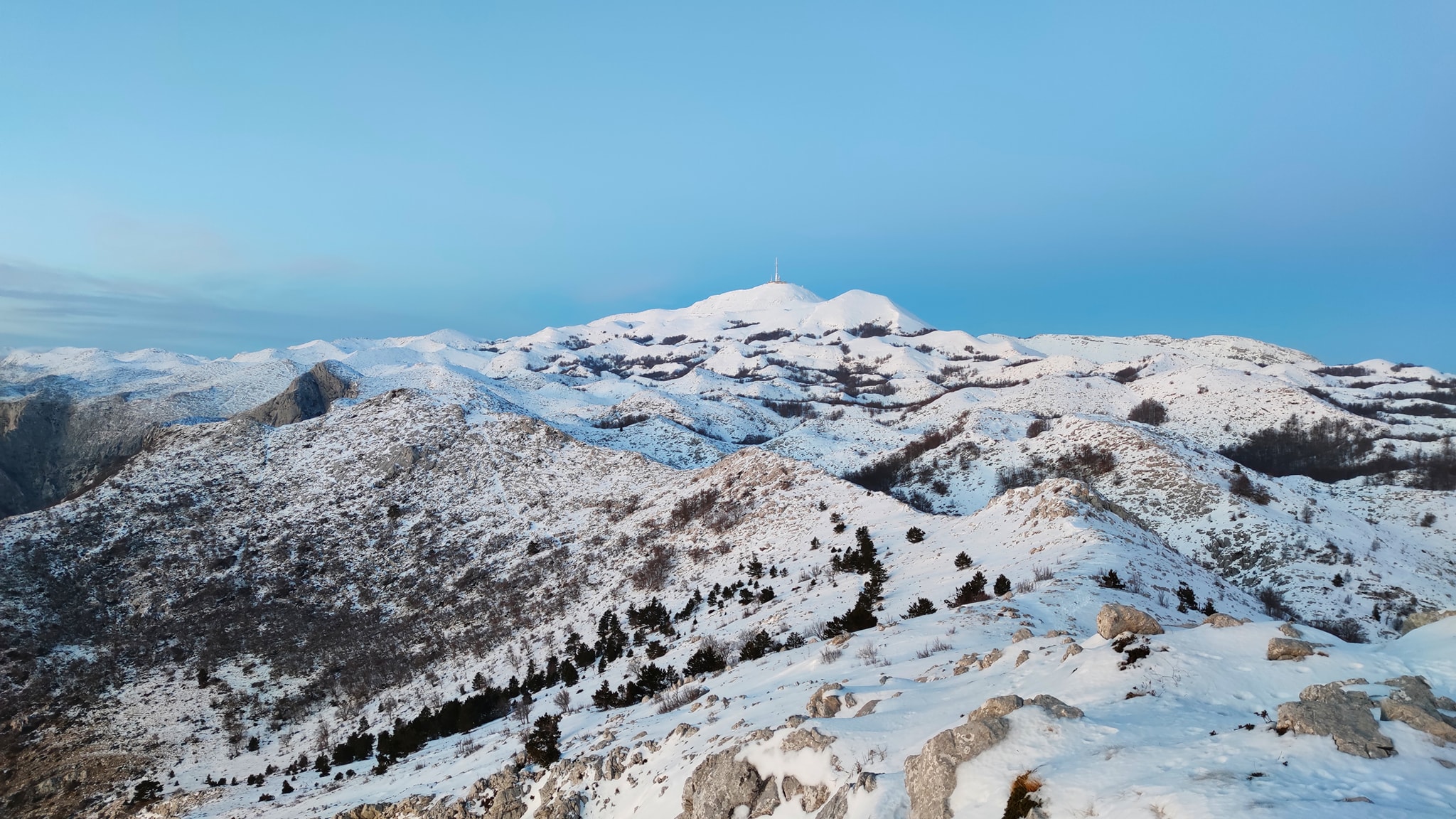
Snowy Biokovo

View from Biokovo
Then followed Perun or Poljička mountain. Perun, says Matija, is not Biokovo, but it has its charms.
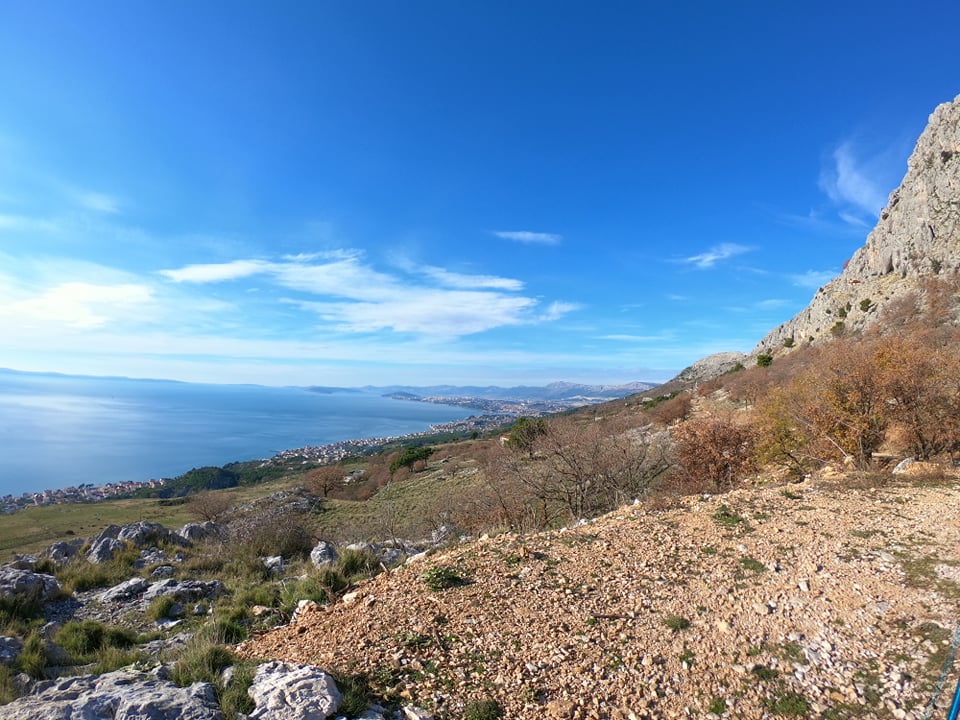

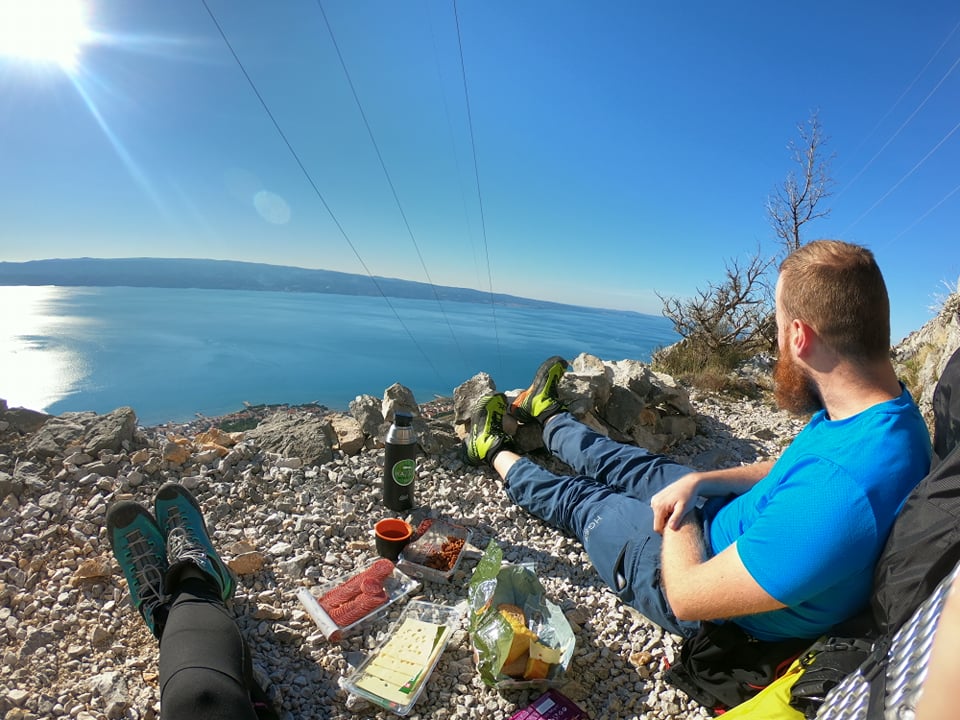
Capturing beautiful moments on their way to Perun
"From Omiš, you go a little towards the village of Gata, so the ascent to the chapels begins, and then descends to the seaside, which is beautiful, with a view of the islands. The moment when Split appears in front of you is especially impressive. So far, I've seen Split from all sides, even from a helicopter, but this is the best view of Split I have ever seen. Brutal," says Matija.
The northern part of Dalmatia - the Dinara mountain, the Lika region, and Velebit mountain - are still waiting for them. The journey is challenging but also exciting.
"Dinara and Velebit are our next challenges. Dinara is quite laid, and I think it will be relatively easy. We know it will all be covered in snow. On Velebit, Vaganski Vrh and Sveto Brdo, two highest Velebit peaks can be quite tricky, especially if those huge cliffs freeze," says Matija, but points out that they are well prepared.
Good equipment is the key
So far, they have not even used all the equipment they brought with them, and they were at a temperature of -15 degrees Celsius with a strong wind. They have high-altitude hiking boots, sleeping bags that can withstand -20 degrees. They also have a real expeditionary Himalayan tent for two, weighing a little less than 4 kilos, wind-resistant over 150 km / h.
"We mostly relied on obtaining quality and safety equipment. Since we travel in the winter, we needed good winter equipment that can withstand low temperatures. I think we did our best in researching for good equipment. We have quality equipment, and we are ready to sleep in winter conditions," says Josipa.
She doesn't check her phone very often, and the signal is lost every now and then, so it's harder to communicate. However, that doesn't bother them – they have each other.

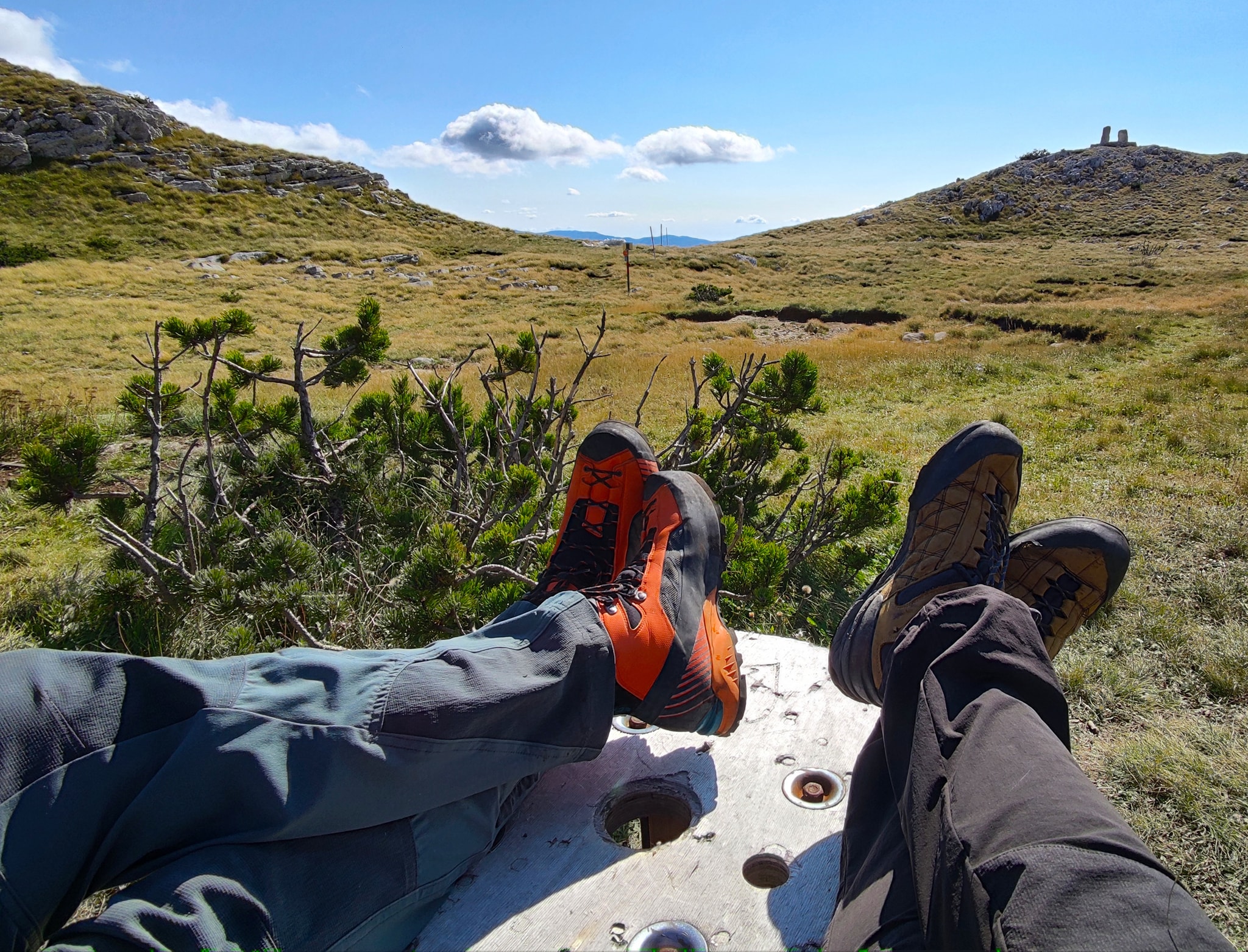
Josipa and Matija
When asked how much it took them physically to prepare for such an endeavor, they say that they are in the mountains every weekend and spend all their spare time in the mountains, so they do not physically prepare too much.
"As for mountaineering life, we are very active. We crossed both easier and harder climbs, both in summer and winter, so we are well prepared. And mentally... I don't think you can mentally prepare for that until you face the path itself. You have some idea what it might look like, but until you find yourself there, you don't know," says Josipa.
Prepare, don't rush, and enjoy the fantastic scenes
And that hiking is becoming a popular hobby in these new circumstances is confirmed by the story of Marin Zovko, who, combining Via Adriatica with the Croatia Long Distance trail, recently walked the whole of Croatia in just 100 days. He decided to embark on his adventure alone and later admitted that loneliness had fallen hardest on him.
Josipa and Matija, more or less, always hike together and often mountaineer in larger groups since they are active members of the mountaineering society. Apart from the company that the hiking companions provide, Josipa says that it is good to hike in the company for safety reasons.
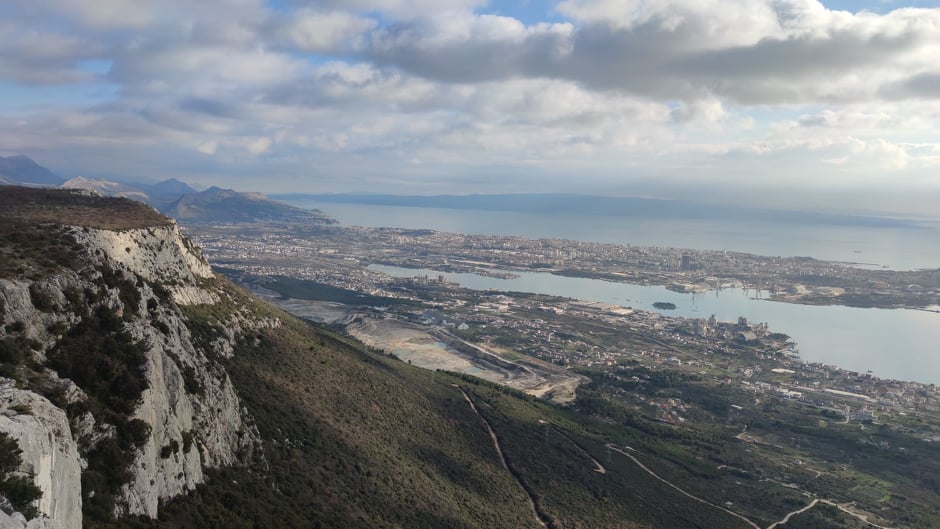
View from Kozjak
"Honestly, I would never dare to undertake such an endeavor alone. Matija knows a lot about the mountains, and since he is a member of the HGSS, we are in safe hands," says Josipa happily.
They recommend people to enjoy the trail, not to rush, but to prepare.
"It takes a lot of courage and a lot of madness to set out on a journey like this, but the trail takes back everything a hundredfold. We watch amazing scenes, and we get to know our country even better. Whoever is interested in something like this, I would recommend it from the bottom of my heart, "says Josipa.
We now let them continue their journey in peace, enjoying all the natural beauties surrounding them because they are quite exhausted due to the Via Adriatica venture's daily demands.
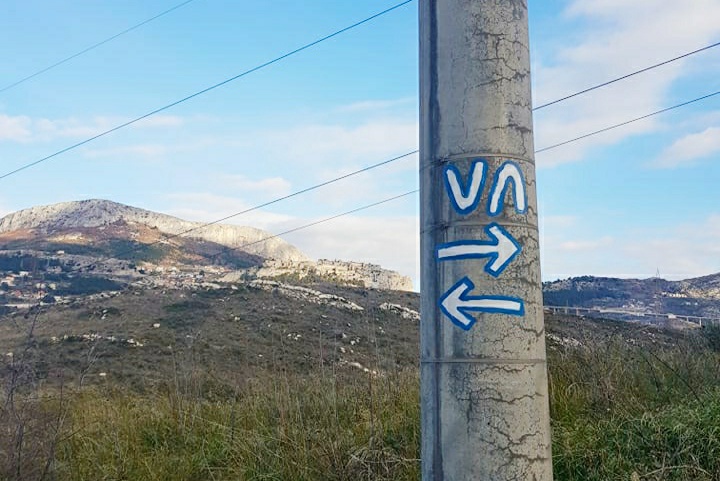
All the photos are from interlocutors' private archives.
To follow more news from their Via Adriatica adventure, you can find them on Facebook.
For the latest travel info, bookmark our main travel info article, which is updated daily.
Read the Croatian Travel Update in your language - now available in 24 languages.
International Mountain Day Encourages Conserving Mountain Biodiversity
December 11, 2020 – On the occasion of International Mountain Day, which is marked worldwide today, the Croatian Mountaineering Association, WWF Adria, and Parks Dinarides called for mountain biodiversity preservation.
Biodiversity is the theme of this year's International Mountain Day, which is being celebrated around the world today. The UN General Assembly proclaimed this day in 2002 to highlight mountains' significance for nature and people.
Croatian mountains perfect for hiking
The Croatian Mountaineering Association, the largest Croatian association, dedicated to environmental protection, points out that we should not forget that the Croatian mountains are unique in the world precisely because of their great diversity in a small area.
"The tallest Croatian mountains belong to the Dinaric mountains, and ecologically extremely sensitive karst relief is what characterizes them. They stretch in a northwest-southeast direction, along the Adriatic coast in several parallel rows, starting with the island mountains.
Unlike the Dinarides, the Pannonian and Peripannonian mountains are mostly old geological structures, with milder slopes, relatively low, and rich in water and vegetation. Their direction of stretching is not unique, but nowhere does it coincide with the Dinaric. They are characterized by the abundance of watercourses that have cut deep valleys over the centuries and thus created a colorful relief.
Due to the low altitude compared to the world's highlands, most of the Croatian peaks are relatively easily accessible for mountaineering, which makes the Croatian mountains very suitable, practically ideal for hiking," wrote the Croatian Mountaineering Association.
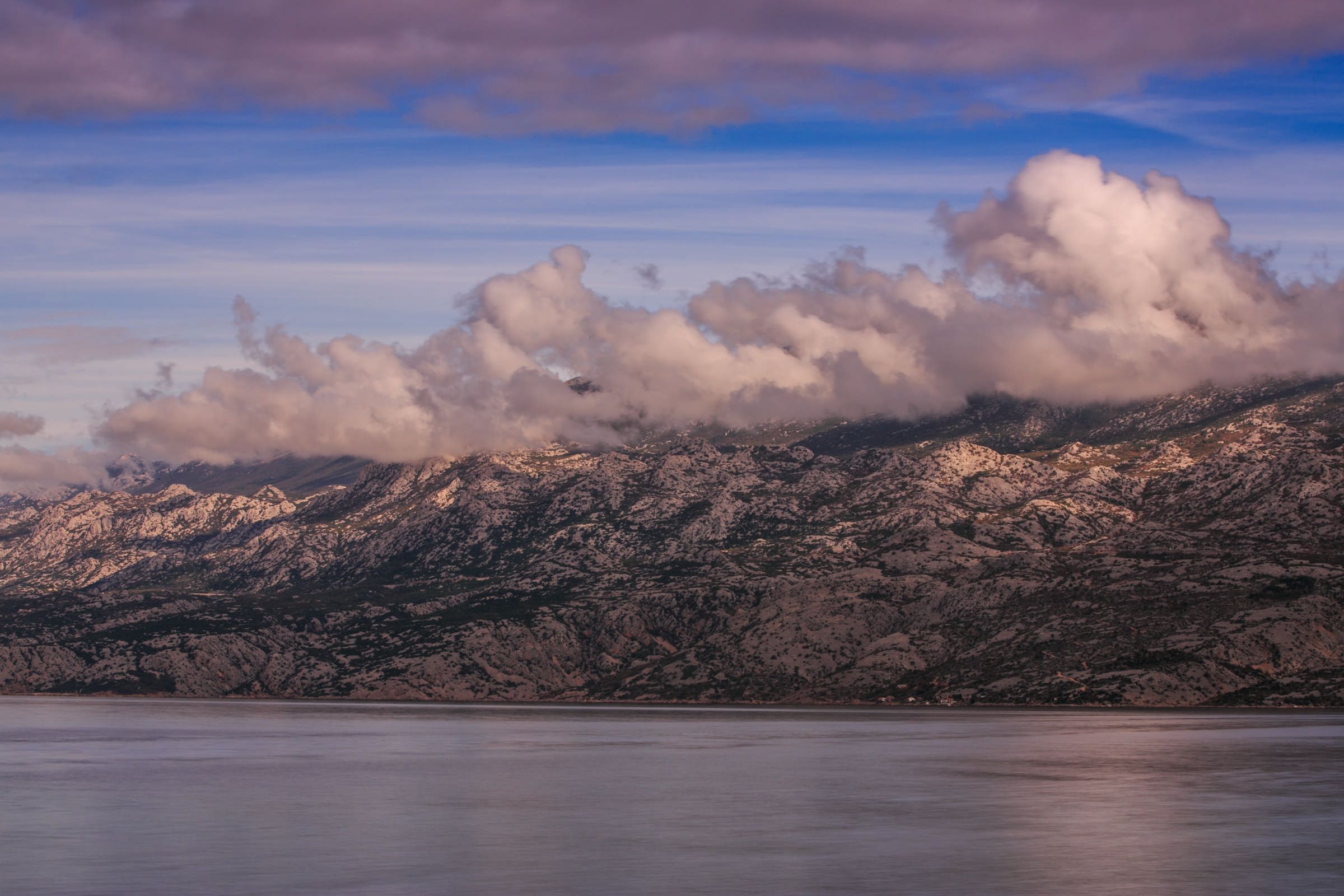
Velebit, the biggest Croatian mountain / Copyright Romulić and Stojčić
Croatian karst richness
Every year, the Croatian Mountaineering Association celebrates International Mountain Day with various actions. Still, since larger gatherings are not possible this year, they mark this day by publishing posters with messages and slogans of mountaineers on the topic "Do not leave a trace."
Next year will be the International Year of Caves and Karst, and the Croatian Mountaineering Association announces that it will mark it with a series of speleological, ecological, and promotional actions aimed at emphasizing the need for better protection of caves and karst.
In terms of karst richness, including numerous caves and pits, Croatia is among the most interesting and richest countries in Europe.

Biokovo mountain / Copyright Romulić and Stojčić
Mountain-specific policies
World Wide Fund for Nature Adria (WWF Adria) and Parks Dinarides also called on the public to preserve mountain biodiversity. At the conference about the impact of the COVID-19 pandemic on protected areas, they highlighted the sensitivity of protected areas in situations where tourism is impossible.
They emphasized that mountain biodiversity is threatened by climate change, unsustainable agriculture, mineral exploitation, deforestation, poaching, land conversion, and over-construction.
In addition to natural disasters, all this leads to a fragile and unstable environment for local communities. The most significant consequences are marginalized groups, such as communities in rural mountainous areas, who often leave their homes due to a lack of economic development opportunities. Therefore, they pointed out that one recommendation is to include mountain-specific policies in national sustainable development strategies.
To read more about lifestyle in Croatia, follow TCN's dedicated page.
JYSK Holds Action to Plant 10,000 Seeds on Medvednica
As Poslovni Dnevnik writes on the 15th of April, 2019, this past weekend, as part of a socially responsible project, the popular JYSK retail chain held a voluntary action to plant 10,000 European beech seedlings in two zones in the Medvednica Nature Park in Sljeme, above Zagreb, which have been most adversely affected by the weather's elements over last few years.
"We got together on Sljeme so that JYSK's volunteers, together with citizens, planted 10,000 beech seedlings donated by JYSK as part of our action. We're renewing the area in two zones of the Medvednica Nature Park, which died a couple of years ago after stormy weather.
''In addition to helping financially as a company through such projects, we want to help and in a different way to keep track of nature for the next generation,'' said Vesna Kukić Lončarić for JYSK Slovenia, Croatia, Bosnia and Herzegovina and Serbia.
The project was realised in cooperation with Croatian forests (Hrvatske šume), and the afforestation was carried out in the area around PD Risnjak within the Medvednica Nature Park. Despite the unfavourable weather conditions and even some snow, the afforestation action was supported by numerous citizens interested in the conservation of the environment who planted as many as 10,000 seedlings in the aforementioned locations. Among them was the famous Croatian singer Mirela Priselac Remi.
"We welcome JYSK's initiative and we'd like to thank them for their activities as part of their socially responsible business towards the forests. Such actions contribute to raising awareness among all citizens of the need for forest conservation and they are endangered by climate change and the irresponsible behaviour of individuals,'' she stated.
''Without the forests, there's no clean air nor is there any clean water, and such young and healthy forests as are sprouting here are our best allies in alleviating the consequences of climate change. There are multiple uses of forests, and only with responsible management can we manage to preserve them,'' said Damir Miškulin from Croatian forests.
For this project, JYSK collected funds from the sale of 50 percent of recycled plastic bags during the first three months of this year, which were donated for the purchase of seedlings for the purpose of afforestation. JYSK's objective is to raise public awareness of the importance of our forests and their development with a positive example, and continue to implement such projects throughout the year and throughout the whole of the Republic of Croatia.
Make sure to follow our dedicated lifestyle page for much more. If it's just the Croatian capital you're interested in, give Total Zagreb a follow, or check out Zagreb in a Page. Care about the environment? Follow Total Eco Croatia.
Want to see how Croatia works to protect its environment? Click here.
Croatia to Gain New Tourist Destination with 68 Million Kuna Project
As Poslovni Dnevnik writes on the 8th of April, 2019, the Cerovac caves are some of the most interesting geomorphological attractions nature has to offer in Croatia, and the caves were originally set up for visitors back in 1951.
The ''Cerovac caves'' centre of excellence deals with the sustainable management of natural heritage and karst underground, and this new tourist project should be able to get completely off the ground in two to three years, writes Večernji list.
The Cerovac cave project is being carried by the the Velebit Nature Park public institution (JUPP Velebit) and the project's partners, which include the Zagreb Speleological Association, Zadar County and the public institution for the protection of nature of Zadar County, Natura Jadera.
''The total value of the project stands at 68.5 million kuna, out of which approximately 53 million kuna of non-refundable money is being granted by EU funds, and the rest of the money, along with that of the project's partners, will be provided by the Ministry of Environmental Protection and Energy and the Environmental Protection Fund,'' stated the president of the Zagreb Speleological Association and historian Stipe Tutiš, who was immediately followed by architect Roman Šilje, who went on to explain the meaning behind and the ultimate goal of the whole project.
''In southeastern Velebit, in Crnopac just above Gračac, the largest natural speleological sight in the Dinaric karst, the Cerovac caves, can be found. So far, only the ipper and lower Cerovac caves were visible and accessible, but owing to the passage of time and to the Homeland War, they remained neglected. Therefore, Croatian speleologists, as the initiators of this project, have begun with all of their other partners to return to this unique karst phenomenon and give it the importance it deserves, so, back in 2010, we started with the development of this project. Five years later, the project documentation got started, which was funded by the Environmental Protection and Energy Efficiency Fund.
In October 2016, the project was submitted to the Operational Program for Competitiveness and Cohesion 2014-2020. The evaluation lasted from October 2016 to April last year, and on April the 4th, 2018, around one year ago, an agreement was signed with the Ministry of Regional Development and EU Funds,'' concluded Šilje.
Make sure to follow our dedicated lifestyle page for more information on current projects in Croatia and much more.


